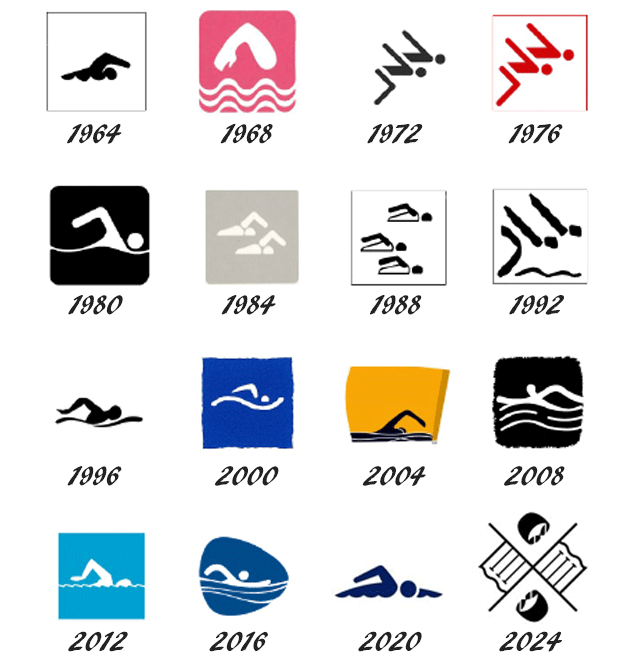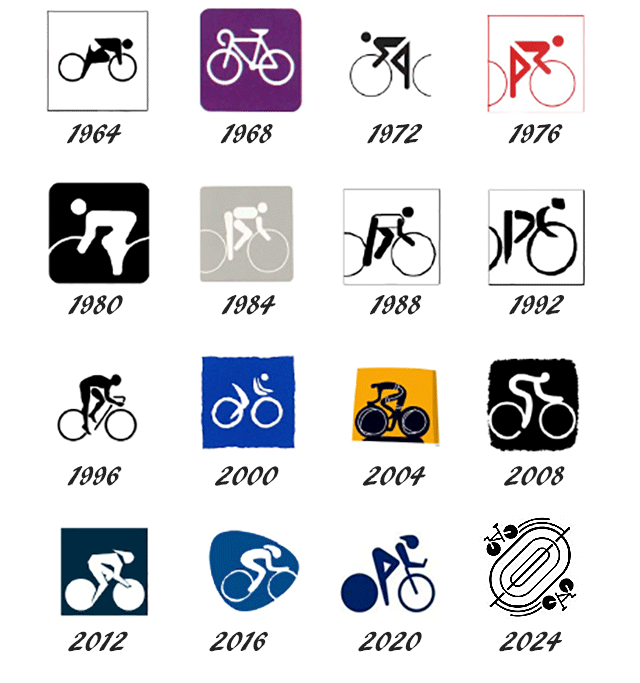An Olympic pictogram is a graphic symbol that represents a specific Olympic sport or discipline. Pictograms were first introduced at the 1964 Tokyo Olympics and have since become an important visual element of the Olympic Games.
Each pictogram is designed to be easily recognizable and visually distinctive, with a simple, stylized depiction of an athlete or equipment used in the sport. They are usually rendered in a single color on a white background to maximize their visibility and clarity.
Pictograms are used in a variety of contexts throughout the Olympics, including on official merchandise, signage, and in promotional materials. They serve as a visual shorthand for the sports and events of the Games, allowing spectators and viewers to quickly identify and understand what is happening.
Each Olympics since then has designed its own unique images. We have used the pictograms from several of the sports to demonstrate the changes in designs over time.
Swimming Pictograms (1964-2024)
Here are the swimming pictograms used for each Olympic Games since the first in 1964. For some Olympics, there was just one pictogram for the sport of aquatics, which invariably showed the swimming discipline anyway.
 Swimming Pictograms
Swimming PictogramsCycling Pictograms (1964-2024)
Here are the cycling pictograms used for each Olympic Games since 1964. Up until 2008 there was just one pictogram for the sport of cycling, afterwards there were individual images for the different disciplines such as track, road, BMX etc. Just the track cycling version is shown when there were more than one.
 Cycling Pictograms
Cycling PictogramsWeightlifting Pictograms (1964-2024)
Here are the weightlifting pictograms used for each Olympic Games since 1964.
 Weightlifting Pictograms
Weightlifting Pictograms

 Upcoming Events
Upcoming Events